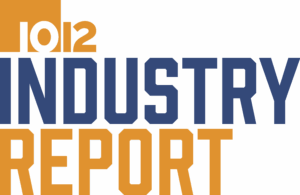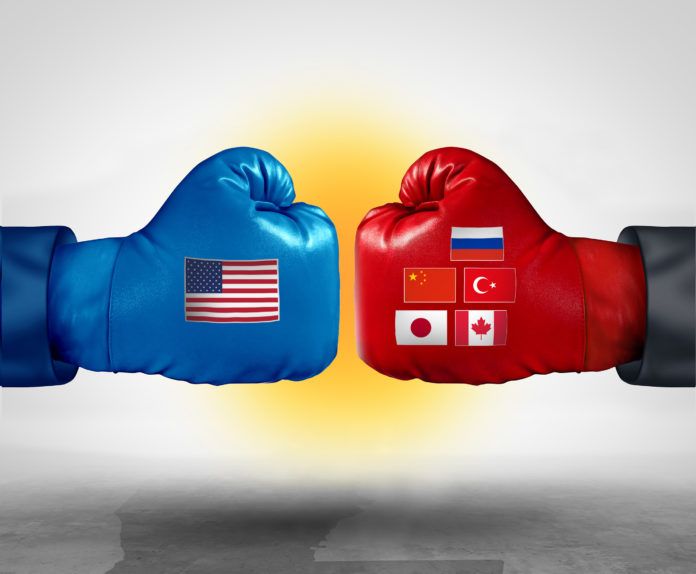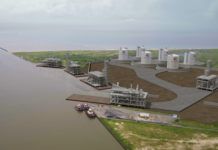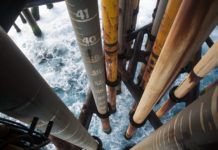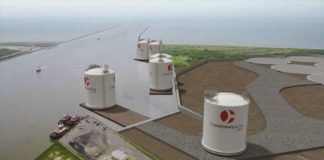Outside of the domestic steel industry, it’s difficult to find anyone, anywhere, with a favorable view of the current tariff-induced trade war. Sizeable spikes in steel prices and an uncertain future have many industrial owners wringing their hands, as an estimated one-third of their capital dollars is spent on steel products.
The culprit is a 25% steel and aluminum tariff levied earlier this year by President Trump against China, the EU and others under Section 232 of the Trade Expansion Act. China then retaliated with tariffs of its own on agricultural products, seafood and cars. To date, billions of dollars in tariffs have been imposed by both countries.
Louisiana’s ports felt an immediate gut punch from the resulting trade decline. Robert Landry, Port of New Orleans vice president and chief commercial officer, says his port is $200,000 below its fiscal year budget (as of early September), almost entirely because of the tariffs. If the trend continues, he says “we’re going to see a million-dollar hit by the end of the year.”
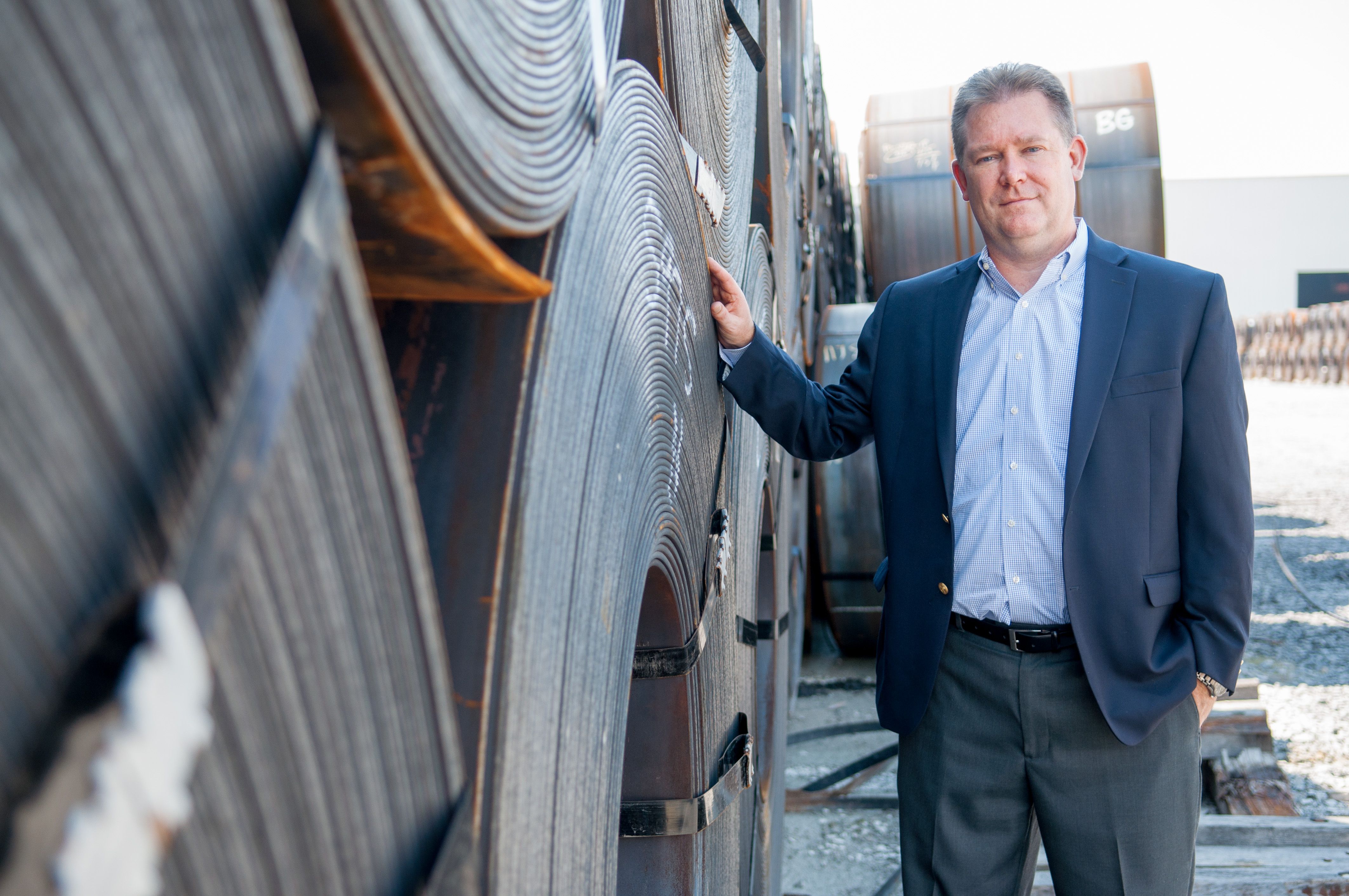
ROBERT TURNER, senior vice president of strategic sourcing and quality, Stupp Corp.
The port receives import revenue from two primary sources—a per-ship dockage fee and a rental charge assessed for each ton of cargo moved off the ship. “Through the first six months of the [fiscal] year, we’re probably down 25% to 30% in inbound cargo,” Landry says. “Steel is our single largest import commodity and when we take a hit in steel it’s a big one, not only from a business standpoint but from a revenue perspective.”
The amount of cargo per ship is also dwindling. Ships that typically bring in 8,000 to 10,000 tons of steel are now hauling a mere 3,000 to 5,000 tons.
New Orleans is among the top three ports for imported steel in the U.S., primarily because of the access it provides to Midwestern manufacturing sites. The product arrives at the port in slabs or high-quality steel coils, then up to 80% of it is sent upriver by barge to facilities that make automobiles, appliances, machinery, oilfield pipe, vessels and more.
While Asian steel comes to the port via the Panama Canal, the bulk of steel in 2017 came from Europe, as Turkey was the single largest steel importer, followed closely by Japan. Each of the countries imported just under 400,000 tons last year. “Turkey was buying scrap from the U.S., converting it into steel and then shipping it back.”
That’s all changing due to the tariffs and an unstable political climate in Turkey. “We’re going to see the shipments from Turkey way down in 2018,” Landry says. “It shows how widespread the impact of these tariffs are. The country that everyone assumes would be targeted, China, really didn’t have much coming into New Orleans.” On the upside, advances in the port’s cruise and container businesses are making up for the decline, and in October it announced the purchase of the 254-acre Avondale Shipyard by Avondale Marine LLC for eventual re-development.
Upriver at the Port of South Louisiana, Executive Director Paul Aucoin says the uncertainty brought by the tariffs could be “a killer” for local industry. Nonetheless, his port’s tonnage numbers were 2% higher through August, despite China being one of its top trading partners at 12 million tons in exports ($5.1 billion) and 1.4 million tons in imports ($1.2 million).
He is “bullish” about the grain sector, since China consumes significantly more grain than it can produce or find outside the U.S. The port primarily oversees exports/imports of soybeans, corn, crude oil, coke, chemicals and fertilizers. “They will come back to us whatever the cost,” he notes. “There’s just not enough grain out there to satisfy their needs in Argentina, Brazil and other places.”
NO PROJECT DELAYS—YET
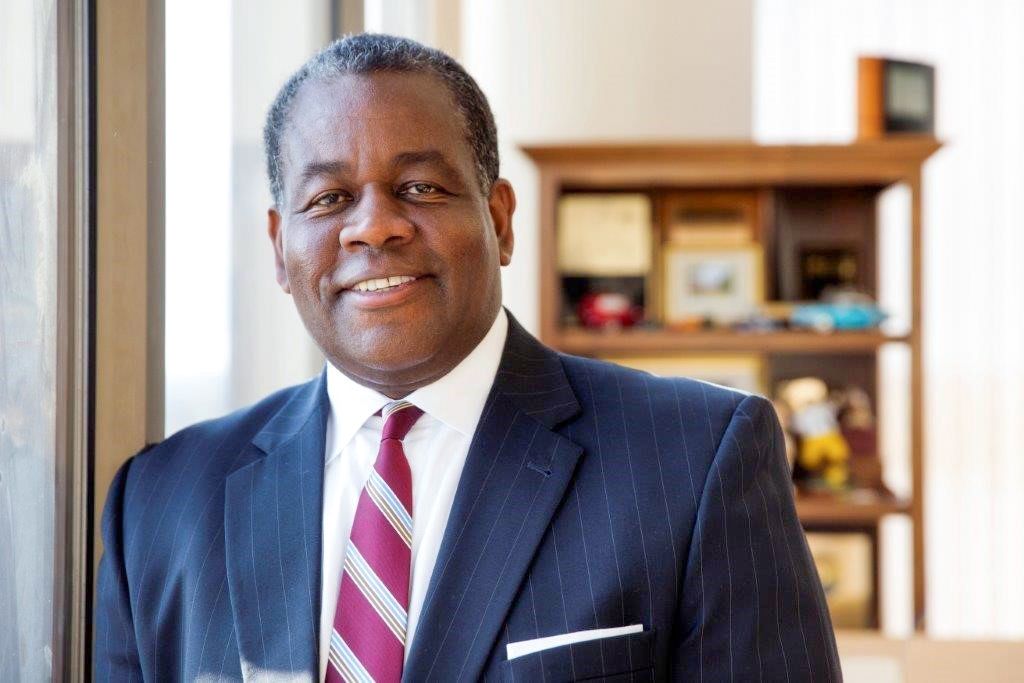
GREG BOWSER, president, Louisiana Chemical Association
Aucoin is particularly concerned about impacts to the petrochemical industry in the area. “They just have no idea how this is going to play out. We have $23 billion worth of new industries announced here. I’m sure a lot of them are going to sit on those construction plans until this thing gets resolved.”
The threat is very real, says economist Loren Scott of Loren C. Scott & Associates in Baton Rouge. The larger the petrochemical or manufacturing project, the more significant the impact to cost. He estimates that about $90 million could be added to the planned $1.85 billion Yuhuang Chemical methanol plant in St. James Parish, one of the projects Aucoin is watching. “It’s a nontrivial number,” he adds. “The decision to go forward is a matter of math. Someone at the company is figuring the rate of return on equity, and the rate of return just went down.”
Scott hopes the tariffs are merely a bargaining tactic on Trump’s part. However, if the move is strictly protectionist in nature, “this is going to be bad on a number of levels,” causing some owners to tap the brake instead of the accelerator and possibly leading to a worldwide recession, he says.
To date, no known local projects have been postponed as a consequence of the rise in steel prices. Toshiaki Ansai, vice president – planning and marketing at Shintech Inc. in Houston, says his company’s mega-expansion in Plaquemine is moving forward—for now. In July, Shintech Louisiana LLC announced it would invest $1.49 billion at the plant to develop a new chlor alkali and vinyl chloride monomer production facility and expand an existing polyvinyl chloride manufacturing facility.
“While we are concerned about the tariff situation, it has not impacted our construction plans or schedule at present,” Ansai said in a written statement.
Greg Bowser, president of the Louisiana Chemical Association in Baton Rouge, doesn’t know of any project delays either, but says his members are undeniably concerned. LCA members have put pressure on Louisiana’s Congressional delegation to have the tariffs rescinded, saying it amounts to little more than a tax on materials.
“Just think about all the steel that goes into the new Sasol facility over in Lake Charles,” Bowser adds. “You add 25% to the cost of that steel and you don’t build that project here. It goes somewhere else. We hope that they will find another way to address this issue because it’s going to create some economic problems for our industry and state.”
Alternatively, managers at steel pipe supplier Stupp Corp. in Baton Rouge expect oil and gas owners to hit the gas instead of the brakes as they try to head off future cost increases. Chip McAlpin, Stupp’s vice president – corporate strategy and development, says the market dynamics of the past actually delayed investment because owners thought steel prices would continue to decline. That’s changed since the tariff.
“It has been a catalyst,” McAlpin says. “There’s a lot of market opportunity right now. The midstream pipe market has picked up fairly substantially, so we’re optimistic that with all the production that’s coming out of the Permian Basin and west Texas, we’re going to see a flurry of pipeline construction activity.”
As proof, Stupp’s revenue numbers are on the rise, a decidedly different scenario than in 2016 when layoffs were imminent. McAlpin acknowledges there are other market forces at work, as oil price increases and new shale plays open up new opportunities for the oil and gas industry, his primary customer.
THE RIPPLE EFFECT

BRAD BARBER, president/COO, H&E Equipment Services in Baton Rouge
The impacts of the tariffs and ensuing trade war are fanning out far and wide, impacting multiple markets and geographies. Ralph Chow, regional director – Americas at the Hong Kong Trade Development Council, warns that the trade war will ultimately impact the entire world, not just China and the U.S. He spoke at a Sept. 6 World Trade Center breakfast in New Orleans. “Even though the U.S. might have more bargaining power in terms of a trade negotiation, both sides are going to suffer,” Chow says. “Nowadays, trade is a global process. A lot of the components for Chinese products are made elsewhere, in Japan, South Korea, Taiwan or even the U.S., so if there are any restrictions on Chinese products these other suppliers suffer.”
Chow says China’s economic structure is changing as it becomes more consumer-oriented. As a result, the country is becoming less dependent on exports. “They know that in the long term they really need to promote the consumer market in order to sustain economic growth,” he adds. “They can’t rely solely on export markets. That’s why their reliance on exports is gradually diminishing. Still, the trading relationship between China and the U.S. has become the most important relationship in the world.”
Paul Nathanson, spokesman for the Coalition of American Metal Manufacturers and Users in Washington, D.C., says steel shortages in the U.S. are worsening because domestic suppliers can’t handle the load, and lead times for steel orders have gone from a couple of weeks to six months.
Nathanson acknowledges that there have been no significant layoffs, but says that’s because many companies have, until now, benefitted from tax cuts. “Many of these companies are absorbing the costs right now,” he says. “They entered the year very excited because the tax cuts gave them more money to invest in their businesses, and they were going to hire and expand production lines. The tariffs have completely wiped that out.” He hopes that once domestic market utilization rates hit 80% the tariffs will be adjusted or eliminated.
The steel hikes are impacting equipment costs as well. Brad Barber, president/chief operating officer at H&E Equipment Services in Baton Rouge, says the makers of construction equipment are already attempting to pass off higher prices to distributors through a steel surcharge. H&E represents about 80 manufacturers, with a half dozen or so comprising a majority of the company’s revenue.
Early on, manufacturers took a measured approach and began messaging distributors to warn them of impending increases. So far, H&E has weathered the effects through existing pricing agreements, but Barber is not making any promises for 2019. “All of those big guys have attempted to pass on price increases in the form of a steel surcharge, between 2% to 4%, beginning last spring,” Barber says. “I think our broader risk, and the risk of most distributors and rental companies, will be in 2019.”
If the tariffs continue into next year, no one will remain untouched. “For what we sell retail, [the surcharge] will pass through to the customer just like a car dealer,” he adds. “It takes a little bit longer to digest that on the rental side of the business, whereas on the retail side it’ll happen very quickly. Unfortunately, the consumer is going to pay the whole burden.”
In the construction sector, the price instability has led to shorter estimation cycles. Stevie Toups, executive vice president of Turner Industries in Baton Rouge, says a construction estimate might be good for only a week rather than 30 days “because they just don’t know what’s going to happen.” Some owners, in fact, are assuming the risk of rising steel costs so that contractors don’t have to account for it in their bid.
Toups suspects that the tariff is a favorite topic in the boardrooms of many large industrial owners. He fears that pipe and vessel fabricators could leave en masse to be closer to steel suppliers and avoid the tariff, offsetting any gains in domestic jobs. “If the president wants tariffs, that’s fine,” Toups says. “If he doesn’t want tariffs, take them off. But sitting in purgatory is what kills us.”
Nestor Navarro, managing member of Houma-based Navarro International Group and a consultant to the South Louisiana Economic Council, says it’s still too early to predict the impact to the Houma/Thibodaux area. Still, anything that slows growth in the already hard-hit oil and gas market can’t be good.
Navarro represents various sectors, including oil and gas, agribusiness and seafood, so he has witnessed the broad scope of the trade war. He remains optimistic, primarily because of a recovering market and tax cuts. “I see the oil and gas rallying next year and continuing to do so,” he adds. “The tariff is definitely affecting us. But by the same token, it’s too early to see the full impact that it’s going to have.”
STEEL PRODUCERS PLEASED

LOREN SCOTT, economist, Loren C. Scott & Associates, on the planned
$1.85 billion Yuhuang Chemical methanol plant in St. James Parish
The true beneficiaries of the tariffs are the domestic steel producers. As such, the two steel producers at the Port of South Louisiana—Nucor Corp. and Bayou Steel Group—are decidedly pleased with the tariffs. Nucor’s corporate office, in fact, recently announced a record $1.4 billion in capital spending next year, about $200 million of it going to its direct-reduced iron plant in Convent.
In a prepared statement, Katherine Miller, director of public affairs and corporate communications at Nucor in Charlotte, North Carolina, says the tariff has effectively eliminated the dumping of imported steel into the market.
“The tariffs were put in place to protect national security, which was threatened by the large volume of unfairly traded imports entering the U.S. market, particularly in the years after the recession in 2009,” Miller says in the statement. “Imports grabbed a record 29% of market share in 2015 and have remained at persistently high levels for years. These dumped imports are the result of foreign countries that subsidize their steel industries in violation of international trade rules.”
Miller says the tariff sent a strong message to other countries to change their trade practices, adding that steel prices were already increasing due to economic growth, tax reform and deregulation. “Because of the strong economy, our company’s steel production is up,” Miller says in the statement. “Our steel mills have high utilization rates and we are on track to ship a record amount of steel company-wide in 2018.”
Perhaps no material supplier has felt the burn more than steel pipe manufacturers, but managers at Stupp say they welcome a rise in prices if it will sustain the domestic steel market. The 500-employee plant in Baton Rouge gets some 90% of its steel from domestic sources.
Robert Turner, Stupp’s senior vice president of strategic sourcing and quality, says domestic steel prices have risen in direct correlation with the 25% tariff. Even though it has put “a bit of a squeeze on us,” he sees it as a positive step since it brings U.S. suppliers back to a more sustainable range. “We don’t see it as a positive thing if five or 10 years down the road we’re required to import steel because we don’t have a domestic steel industry. We think keeping the domestic steel industry stable is a good thing for the overall economy.”
John Clark, Stupp’s chief commercial officer, adds that steel costs are somewhat diluted once they’re factored into the overall cost of a pipeline project. “To build a pipeline, you’ve also got to buy fittings, valves and compressors, so when you look at what the actual raw steel comprises as a percentage of the total spend, it’s not as substantial.”
Despite a slew of new, multibillion-dollar oil and gas pipelines under construction in the booming Permian Basin in Texas, the pipeline supplier hasn’t experienced any supply shortages. Stupp’s Turner has found steel to be readily available. “There has been a little bit of misinformation out there that steel is not available domestically. We’ve been able to procure the material we need to operate our business.”
While the Port of South Louisiana’s Aucoin agrees that the tariff has made domestic steel more competitive, he suggests there might have been a better way to tackle the problem. In recent months, Aucoin and others have put pressure on Congress to rescind the tariffs.
“We’re hoping for a quick resolution, but what if we don’t get a quick resolution? How long does that delay everything? Right now, the key word is uncertainty. You’ve got to be able to put together a budget. You can’t put a question mark next to the cost of steel.”
Lake Charles Methanol seeks tariff exemption, lease extension

There’s no doubt that steel price hikes will impact the $4.2 billion Lake Charles Methanol facility at the Port of Lake Charles, but port director Bill Rase says that’s not why the owner hasn’t broken ground.
“They have a $2 billion loan guarantee from the federal government, but they still need to raise the remaining equity,” Rase says. “They’re trying to put the pieces together.”
The cost of the facility has grown from an original price tag of $3.8 billion, but Rase estimates that only $20-30 million of the increase can be attributed to steel costs. The project team has requested an exemption for those steel plant components made exclusively in China, in particular machinery needed for liquefying air or gas. “Finding investors is the main holdup right now.”
On Oct. 22, the Port of Lake Charles Board of Commissioners granted LCM a March 31 extension to its Real Estate Lease Option Agreement to give the owner more time to secure investors. It was the second such extension, as the first was set to expire Oct. 31. LCM is leasing a 75-acre greenfield site from the port along the Calcasieu Ship Channel and an additional site near the port’s new dock facilities for a methanol and sulfuric acid tank farm.
Once complete, the facility will utilize advanced technology licensed by General Electric to refine petroleum coke, a waste product from the oil industry, into a basic hydrocarbon fuel called syngas. The project then uses other industrial processes to clean and convert the syngas into high-value energy and chemical products, including methanol, hydrogen, CO2 and industrial gases.
The LCM project is being developed by Houston-based Lake Charles Methanol LLC, which launched in 2015. Construction of the facility will be managed by Fluor Corp. “The Lake Charles Methanol Project is a key opportunity for the Port of Lake Charles to expand its bulk terminal facilities and services and to grow as an increasingly important international port for the export of chemicals and commodities,” Rase says.
